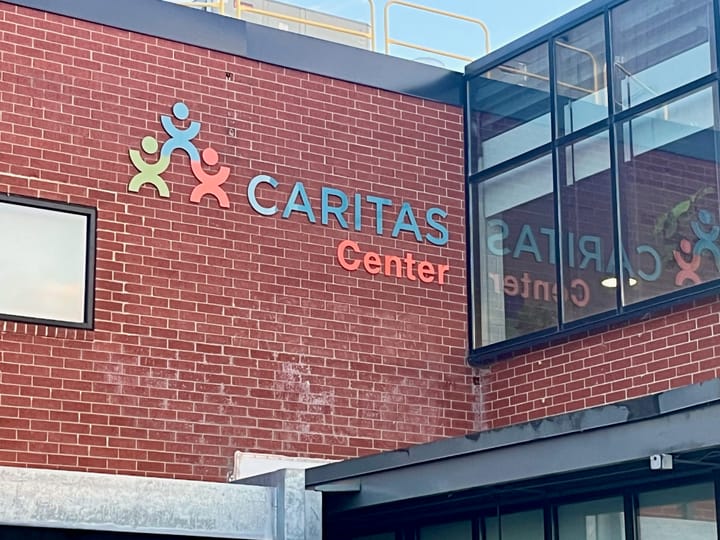A dig for the distant past on Belle Isle
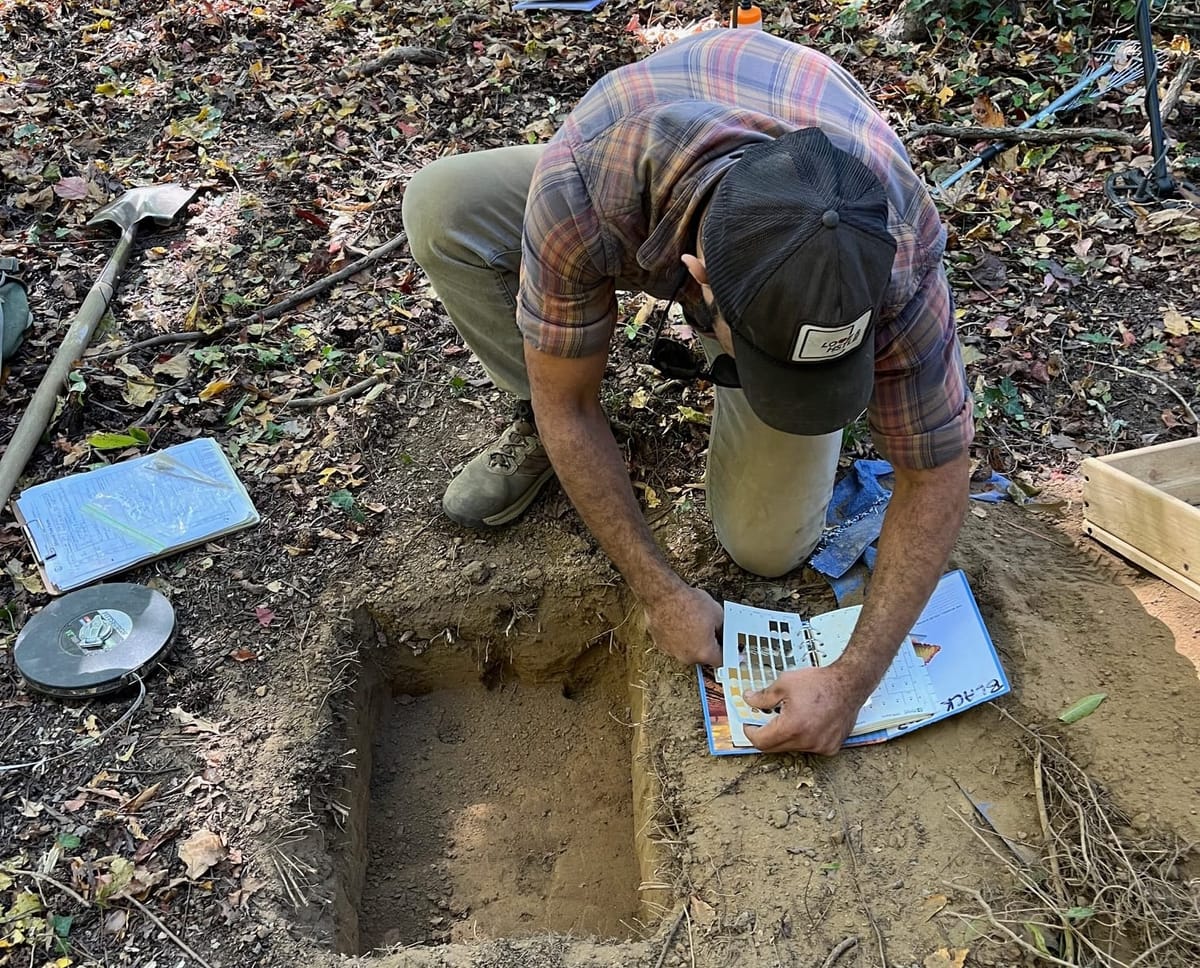
Hike with Tim Roberts through a place as historically fertile as Belle Isle, and it doesn’t take long to see the landscape differently. Depressions in the ground, hillocks, open spaces devoid of trees: Everything has potential meaning. Anything could be a clue.
Our pace slows as we reach the top of the island. Roberts, an archaeologist, surveys the forest. Josh Stutz, head of the Friends of the James River Park, casts a metal detector back and forth above the ground. We’ve left the trail to explore an area Roberts marked on his maps for further inquiry.
“Beep! Beep! Beep!”
The metal detector chirps not two minutes into our search. Stutz and I exchange a look of heightened anticipation. Roberts sets down his tools. I rake the spot clean, and we begin to dig...
Telling a complete story
Belle Isle is the busiest of the James River Park System’s over 60 parcels. Half of the daily visits to the JRPS are to the 54-acre island. It is also, infamously, the site of a Civil War prison camp for Union soldiers. It hosted intense industry for 100 years before the war and 100 years after.
All of these uses left their mark on the island. Some of those marks were scoured away by the James River. Some have been covered by the advance of nature. Many others remain in the archaeological record.
Earlier this year, the Friends decided to enlist Roberts to assess and help uncover that buried record and tell a more complete story of the place.
“There’s a lot of gaps in the history,” Stutz said, of the island. “From the beginning, we said we wanted to do a better job of interpreting Belle Isle. The signs we did four years ago are really focused on the Civil War. But we wanted to explore outside the Civil War history. That’s what’s compelling to me is the opportunity to change the narrative around Belle.”
For Stutz and the Friends, an archaeological assessment of Belle Isle served multiple purposes. One was painting a fuller picture of the historical Belle Isle. Another was allaying concerns from the public that future projects on the island might disturb that history.
“We had been talking to stakeholders, and that was a question that came up pretty frequently,” he said. “If you build something there, is that disrespectful? Are we building on top of graves?”
The answer, they found, is almost certainly no. Post-Civil War industry and the building of the Lee Bridge saw to that. This is a good thing because the Friends have big plans for the island. Earlier this year the non-profit received a $100,000 grant from the Robins Foundation to build a kids’ “nature exploration area” next to the existing bike skills park. The rest will fund design work for reimagining the “nail shed,” the hulking metal ruin nearby. (The Robins Foundation also supports The Richmonder, but has no input into editorial decisions.)
Future plans are even bolder – most notably, turning the old hydroelectric power plant on the south side of the island into, as the Belle Isle Vision Plan states, “a visually and physically accessible [structure creating] opportunities for gathering, recreation, storytelling” that can act as a venue for events and art.
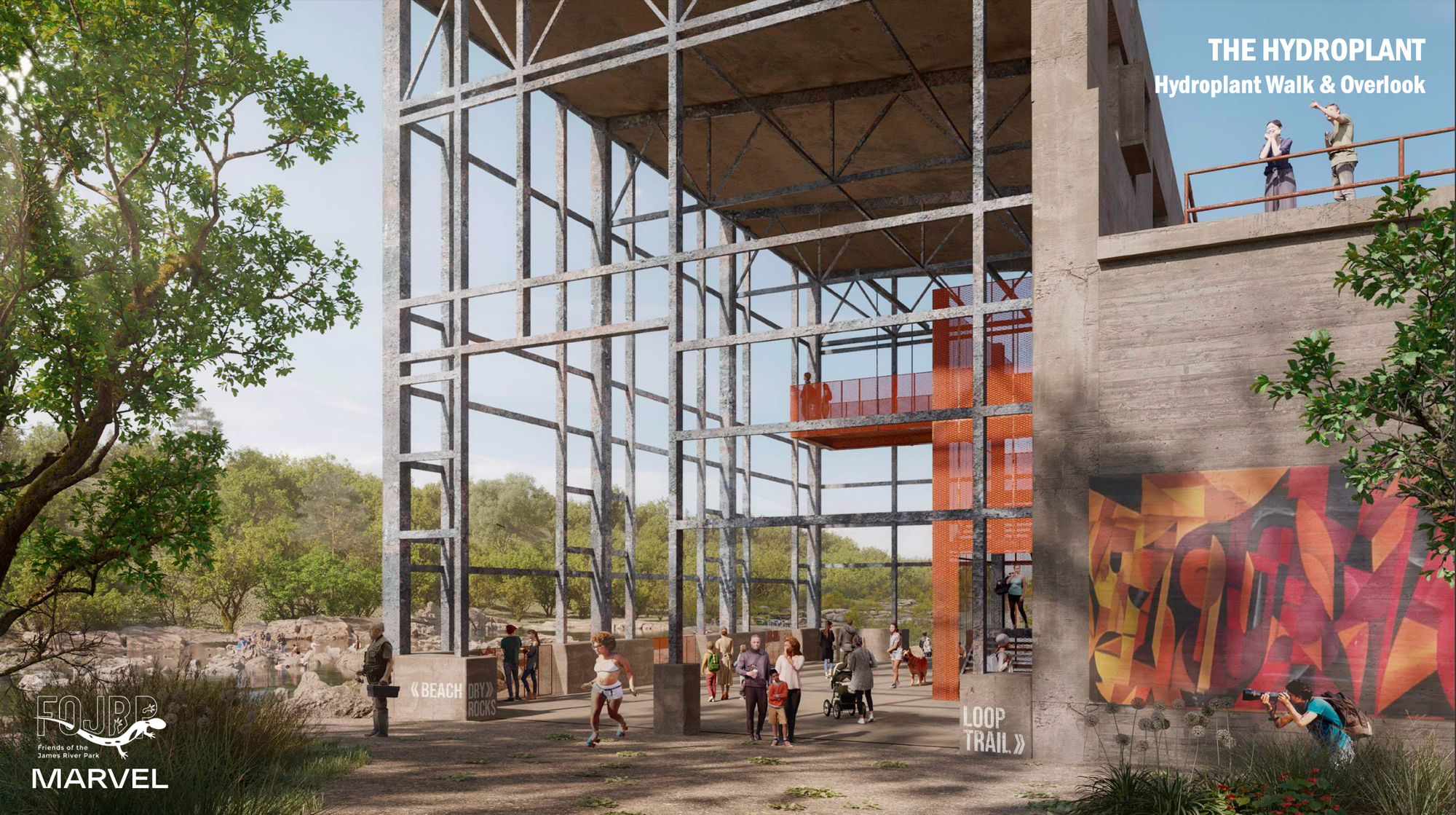
Stutz hopes Roberts’ archaeology work on Belle will pave the way to that future by reminding Richmonders and visitors alike that the island is more than a site of Civil War suffering. That’s what brought us to the highest portion of the island. Roberts believes it offers the best chance for preservation of sites not associated with the Civil War and not associated with late 19th and early 20th century history.
The dig
The owner and founder of Black Star Cultural Resources previously dug a test pit not far from where we’re digging and discovered quartz flakes that he thinks are evidence of pre-Colonial Native Americans use of stone tools.
On this day, our first test pit uncovers two dollar coins from the early 2000s and a copper wire buried below the humic layer. It isn’t loose in the soil. It’s pulled taught, passing through our pit. Was it associated with the radio tower built up here in the mid/late 20th century, Roberts wonders? Stutz follows the wire with the metal detector deeper into the woods, and we choose another place to dig. I salivate at the thought of finding an arrowhead or some other tangible evidence of Native American life on the island.
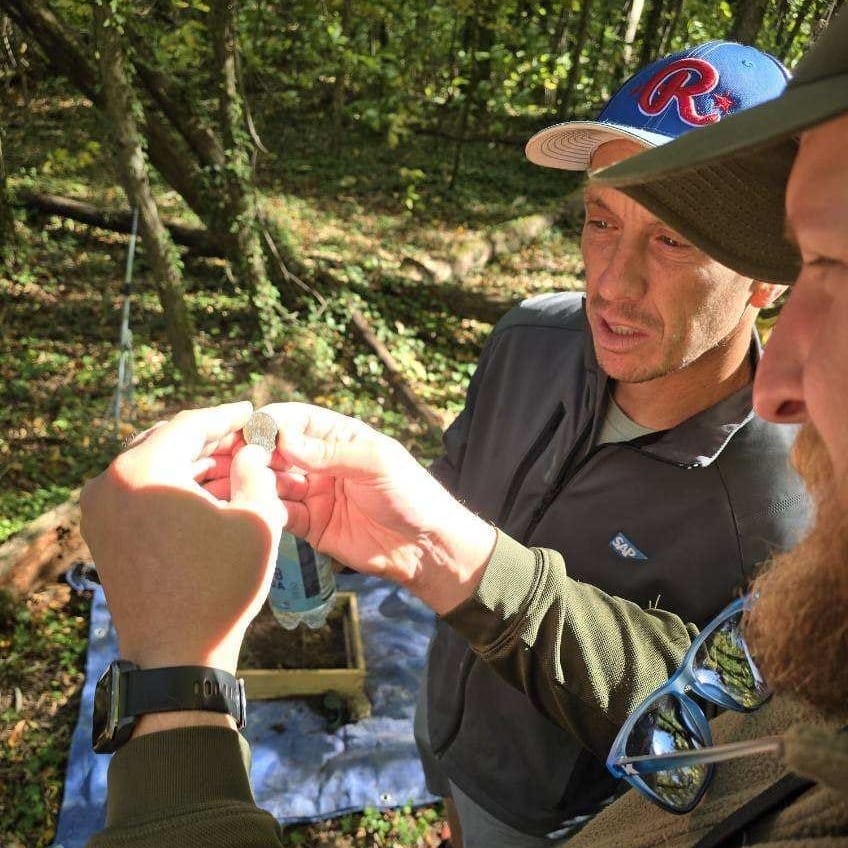
“It’s the largest and most stable island in the city, and [this] high ground has avoided all these 200-year floods,” Roberts says. “Things haven’t been destroyed up here. It’s impossible for me to conceive of Native Americans not using the island for all kinds of stuff. Based on warm fuzzies and some iffy information – it’s not the kind of thing that I would bring to the state – I am convinced that there are buried sites on the island that were made by Native American people before Colonialism.”
But he cautions, “the only things that are really recognized are the fish traps, the arrangements of stones in the river. In terms of buried deposits, nothing has ever been really recorded. There’s nothing in the state database about it.”
Our second test pit turns up another quartz flake. Roberts is giddy.
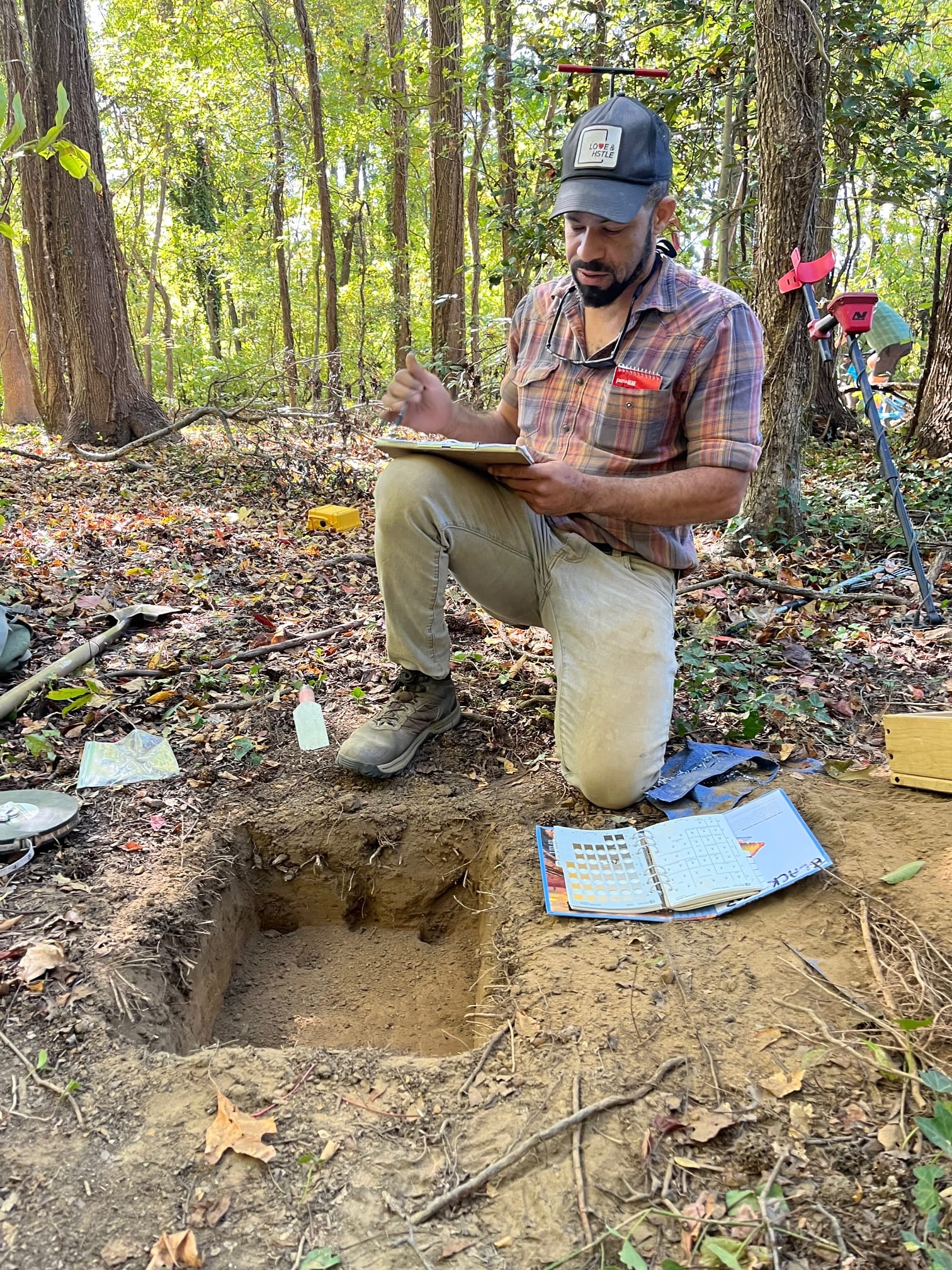
We continue digging, dumping the soil onto a mesh screen and sifting it for artifacts. We dig and sift and brush the test pit clean. Roberts debates whether a color change we see in one section of the pit is an archaeological feature – maybe the edge of a post hole. He keeps digging and brushing. When he’s done, it looks like you could eat out of this hole in the ground. No, he decides, this most likely isn’t archaeological evidence. Maybe it’s a root casting or a filled-in rodent run.
“There are so many processes that have the potential to make this change pop out,” he says.
Two pits are all we have time for today. In each we found artifacts (modern coins, a quartz flake) and features (cooper wire). An archaeologist like Roberts is a treasure hunter (though he’d never describe himself that way) but also, necessarily, a historian. Much of his work assessing Belle Isle’s archaeological potential is done in archives, looking at old deeds and maps. He tells me about a Civil War-era picture he saw researching the island: “There is a house way back up on the hill, a house that was not built for officers in the Civil War. It’s older. We really don’t talk about it.”
He shakes his head smiling. It’s yet another layer of Belle Isle history waiting to be exhumed.





